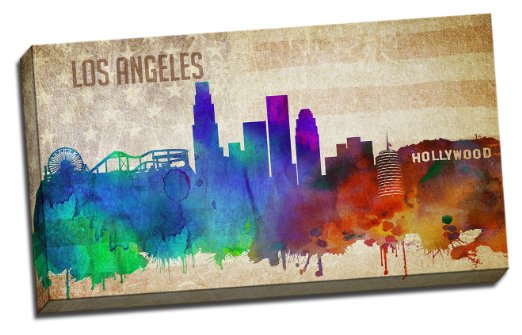- Details
- Written by Super User
-
Parent Category: ROOT
-
Category: Blog
-
Published: 28 March 2016
Los Angeles Union Station (LAUS) is the main railway station in Los Angeles, California, and the largest railroad passenger terminal in the Western United States. It opened in May 1939 as the Los Angeles Union Passenger Terminal, replacing La Grande Station and Central Station.
Approved in a controversial ballot measure in 1926 and built in the 1930s, it served to consolidate rail services from a number of railroads (the Union Pacific, Santa Fe, and Southern Pacific) into one terminal station. Conceived on a grand scale, Union Station became known as the "Last of the Great Railway Stations" built in the United States. It was placed on the National Register of Historic Places in 1980.
Today, the station is a major transportation hub for Southern California, serving almost 110,000 passengers a day. Three of Amtrak's long distance trains originate and terminate here: the Coast Starlight to Seattle, theSouthwest Chief to Chicago, and the Sunset Limited to New Orleans. The state-supported Amtrak CaliforniaPacific Surfliner regional trains run frequently to San Diego and also to Santa Barbara and San Luis Obispo. The station is the hub of the Metrolink commuter trains, and several Metro Rail subway and light rail lines serve it as well, with more in construction or planning.
The Patsaouras Transit Plaza, on the east side of the station, serves dozens of bus lines operated by Metro and several other municipal carriers.
 I LOVE TRAIN TRAVEL ..... IT IS VERY EXCITING !
I LOVE TRAIN TRAVEL ..... IT IS VERY EXCITING !
History
In 1926, a measure was placed on the ballot giving Los Angeles voters the choice between the construction of a vast network of elevated railways or the construction of a much smaller Union Station to consolidate different railroad terminals. The election would take on racial connotations and become a defining moment in the development of Los Angeles.[6] The proposed Union Station was located in the heart of what was Los Angeles' original Chinatown. Reflecting the prejudice of the era, the anti-railroad Los Angeles Times, a lead opponent of elevated railways, argued in editorials that Union Station would not be built in the “midst of Chinatown” but rather would “forever do away with Chinatown and its environs.”
Architecture[edit]
Union Station was partially designed by John Parkinson and Donald B. Parkinson (the Parkinsons) who had also designed Los Angeles City Hall and other landmark Los Angeles buildings. They were assisted by a group of supporting architects, including Jan van der Linden. The structure combines Art Deco, Mission Revival, and Streamline Moderne style, with architectural details such as eight-pointed stars, and even elements of Dutch Colonial Revival architecture (the suggestion of the Dutch-born Jan von der Linden).
Enclosed garden patios are on either side of the waiting room, and passengers exiting the trains were originally directed through the southern garden. The lower parts of the interior walls are covered in travertine marble; the upper parts have an early form of acoustical tile. The floor in the large rooms is terra cotta with a central strip of inlaid marble (including travertine, somewhat unusual in floors since it is soft). The ceiling in the waiting room has the appearance of wood, but is actually made of steel.
Attached to the main building to the south is the station restaurant designed by the famed Southwestern architect Mary Colter. It was the last of the "Harvey House" restaurants to be constructed as a part of a passenger terminal. Although padlocked and stripped of many interior furnishings, the topology of its vast rectangular space, rounded central counter, and streamlined booths remains. The spectacular inlaid cement tile floor[16] reproduces the pattern of a Navajo blanket. Colter also designed a sleek,Streamline Moderne cocktail lounge, which is closed now as well. In October 2014, the Harvey House space was leased to leading local restaurateurs for a gastropub.
The original ticket concourse has 62-foot (19 m) high ceilings and a 110-foot (34 m) counter. Like the southern garden and Harvey House space, it is closed, but rented for filming and special events.
Even with its grand scale, Union Station is still considered small in comparison to other union stations.Union Station is located in the northeastern corner of Downtown Los Angeles, on the property bounded by Alameda Street, Cesar Chavez Avenue, Vignes Street, and theHollywood Freeway. It is across Alameda Street from L.A.'s historic Olvera Street and El Pueblo de Los Angeles State Historic Park. The historic Terminal Annex building is on the opposite side of the Chavez Avenue underpass. Chinatown and Civic Center are a short distance away.
The Patsaouras Transit Plaza on the east side of Union Station hosts several connecting bus lines, including Metro Local, Metro Rapid and Metro Express lines, as well as downtown DASH shuttles, many municipal bus lines, FlyAway express bus service to Los Angeles International Airport, and University of Southern California campus shuttles.he Transit Plaza is named after Nick Patsaouras, former RTD board member and advocate for public transportation. The Gateway Transit Center includes the station itself, Patsaouras Transit Plaza, and the western terminus of the El Monte Busway, as well as Metro's headquarters building. Amtrak and Metrolink share 12 of Union Station's 14 outdoor tracks, with 90 weekday trains departing (91 on Wednesday, 92 on Friday).
- Details
-
Created: 28 March 2016
-
Last Updated: 28 March 2016
-
Hits: 287






